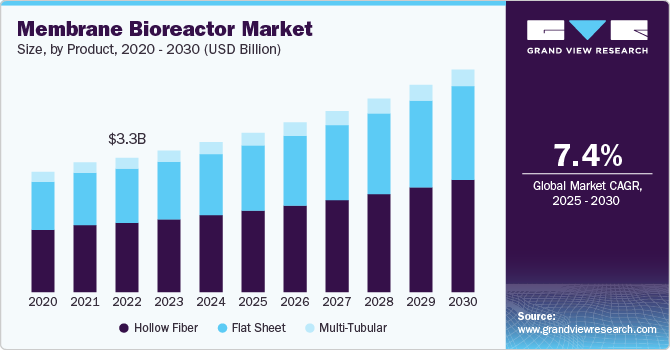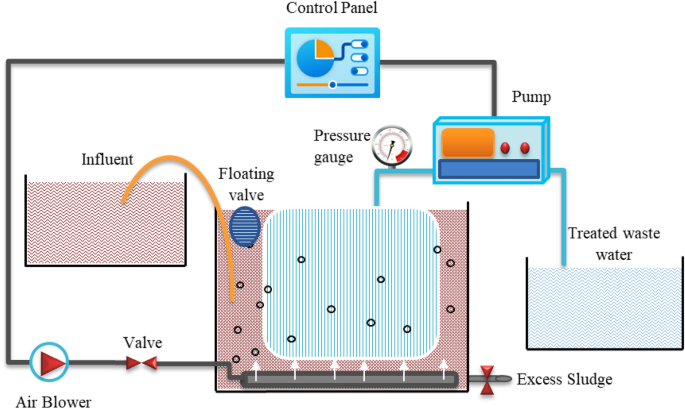Exploring the Benefits of Membrane Bioreactor in Municipal Wastewater Plants
Just How Membrane Bioreactors Are Changing Water Purification Systems
The appearance of membrane bioreactors (MBRs) stands for a considerable advancement in the field of water purification, combining biological therapy procedures with advanced membrane layer filtration technologies. This combination not just enhances the top quality of dealt with effluent but additionally addresses metropolitan room constraints, making MBRs especially ideal for densely inhabited areas. As worldwide water deficiency magnifies, the function of MBRs in facilitating potable water reuse and sustainable water monitoring comes to be increasingly essential. Yet, the implications of this technology extend beyond efficiency-- what difficulties and chances lie ahead for its extensive execution?
Introduction of Membrane Bioreactors
Membrane bioreactors (MBRs) stand for a significant improvement in water purification technology, as they incorporate organic treatment processes with membrane filtration. This assimilation boosts the effectiveness of wastewater treatment by making use of microbes to weaken natural contaminants while simultaneously using semi-permeable membrane layers to separate cured water from put on hold solids and virus.
The MBR system generally includes a biological activator where the microbial populace metabolizes impurities, complied with by a membrane purification system that maintains biomass and allows just clean water to travel through. This double functionality leads to higher effluent high quality contrasted to traditional treatment approaches. MBRs can be run in both batch and continual flow settings, providing adaptability in style and application.
They also enable the recuperation of water for reuse, hence contributing to water sustainability initiatives. In general, MBRs are at the leading edge of boosting water treatment performance and top quality, showcasing the possibility for innovative solutions in environmental administration.
Benefits of MBR Technology
The integration of biological treatment with membrane filtration provides numerous advantages for water purification processes. One of the primary benefits of Membrane Bioreactor (MBR) modern technology is its capacity to effectively get rid of both not natural and organic contaminants, resulting in premium effluent. The membrane layers function as a physical barrier, avoiding put on hold solids and virus from travelling through, which boosts the general security and dependability of treated water.
Furthermore, MBR systems need a smaller footprint contrasted to traditional treatment methods, enabling for more efficient space utilization. This compact style is particularly helpful in urban settings where land is limited. MBRs also demonstrate operational adaptability, fitting varying influent top qualities and circulation rates without considerable performance destruction.
Moreover, the process supplies improved nutrient removal capabilities, specifically for nitrogen and phosphorus, which are vital for avoiding eutrophication in obtaining waters. The minimized sludge production connected with MBR innovation also converts to lower disposal prices, making it a cost-efficient remedy in the future - Membrane Bioreactor. On the whole, the advantages of MBR modern technology setting it as a leading selection for ingenious and sustainable water filtration systems, addressing both ecological and financial issues
Applications in Water Filtration
Applications of Membrane Bioreactor (MBR) modern technology in water purification are varied and impactful, dealing with numerous treatment requires throughout multiple markets. MBRs effectively integrate organic treatment processes with membrane layer filtration, making them optimal for metropolitan wastewater treatment, industrial effluent monitoring, and even drinkable water reuse campaigns.
In metropolitan settings, MBRs are progressively used to boost the top quality of dealt with wastewater, permitting compliance with stringent discharge policies and assisting in the recycling of water for watering and non-potable usages. Their small style likewise makes them appropriate for city settings where room is restricted.
Industrially, MBR modern technology is made use of to deal with procedure water and wastewater, especially in markets such as food and drink, drugs, and textiles. By efficiently eliminating pollutants and suspended solids, MBRs help industries minimize ecological influences while recouping useful resources from wastewater streams.
Furthermore, MBRs are getting traction in decentralized water treatment applications, where small systems can be released in remote areas or developing areas. This flexibility makes it possible for neighborhoods Find Out More to accomplish sustainable water monitoring options, improving access to clean water while lowering dependence on conventional treatment approaches.
Study and Success Stories

In one more instance, a textile manufacturing center in Bangladesh adopted MBR modern technology to address its wastewater challenges. The system minimized chemical oxygen demand (COD) degrees from 1,200 mg/L to less than 100 mg/L, hence satisfying regulatory requirements and significantly lessening environmental effect.
The College of Cape Town's MBR installment has confirmed effective in dealing with greywater for non-potable reuse on campus. This job not just conserves safe and clean water but likewise works as an academic visit their website version for sustainable methods.
In addition, a seafood handling plant in Norway utilized MBR innovation to deal with effluents containing high levels of raw material, achieving over 90% contaminant elimination. These case research studies emphasize MBR technology's flexibility and its crucial role in improving water high quality throughout varied applications.
Future of Water Treatment Solutions
As global water shortage and air pollution challenges heighten, cutting-edge water therapy solutions are becoming progressively important to make certain lasting accessibility to clean water. The future of water treatment depends on the combination of innovative technologies that improve the effectiveness and efficiency of filtration procedures. Membrane layer bioreactors (MBRs) go to the leading edge of this evolution, integrating biological treatment with membrane filtration to produce top quality effluent appropriate for numerous applications.

Arising fads such as source healing from wastewater, including nutrients and power, will even web link more transform therapy centers into environmentally friendly hubs. Furthermore, innovations in nanotechnology and membrane materials assure boosted performance and longevity of purification systems.

Verdict
Finally, membrane layer bioreactors represent a significant improvement in water purification modern technologies, efficiently combining organic treatment with advanced membrane layer filtration. The many advantages, consisting of improved effluent top quality and decreased spatial needs, make MBRs particularly suitable for city applications. Their role in safe and clean water reuse and sustainable water administration highlights their importance in attending to global water shortage obstacles. Continued r & d will certainly further improve the efficiency and adoption of MBR innovation, making certain a resilient future for water therapy services.
The development of membrane layer bioreactors (MBRs) stands for a substantial advancement in the field of water filtration, combining organic therapy procedures with sophisticated membrane filtration technologies. As global water deficiency magnifies, the role of MBRs in helping with drinkable water reuse and sustainable water administration ends up being progressively vital. They likewise allow the recuperation of water for reuse, hence adding to water sustainability campaigns.As international water deficiency and contamination difficulties heighten, ingenious water treatment options are ending up being progressively vital to guarantee sustainable access to tidy water. Their function in drinkable water reuse and sustainable water monitoring highlights their relevance in addressing international water shortage difficulties.